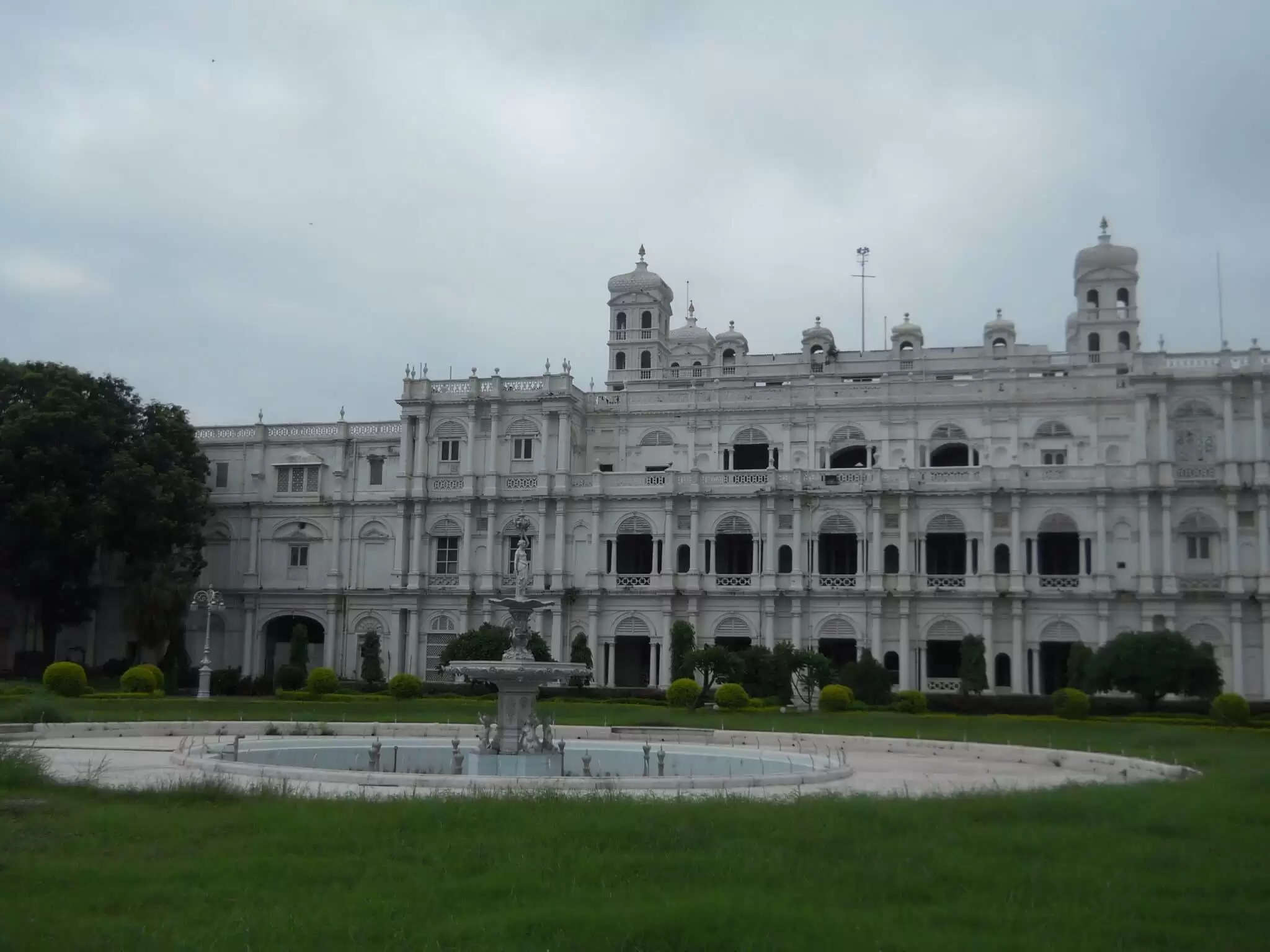8 interesting facts about the luxurious Jai Vilas Palace in Gwalior

Gwalior is a historic city in Madhya Pradesh, India and is famous for its architectural monuments, enchanting palaces, and famous temples.
Gwalior, the heart of Modern India, often attracts unnumbered tourists from across the globe. Historical buildings play a significant role as it attracts tourists and also increases cultural tourism in India. Jai Vilas Palace of Gwalior is among such ancient palaces. The Vilas is also home to a treasure of antiques and gadgets of ancient times.
Here are eight lesser-known facts about Jai Vilas Place, Gwalior:
Jai Vilas Palace Durbar Hall’s majestic carpet
Durbar Hall of Jai Vilas Palace is one of the main tourist attractions. It is 50 feet in width, 41 feet in height, and 100 feet in length. It features magnificent interiors decorated with 560 Kg gold and gilt ornamentation.
The luxurious carpet covers this grand hall. It is known as one of the largest carpets in the world. The weaving of this huge carpet was finished in 12 years by the prisoners of the Gwalior Fort. It also features the two most world’s famous crystal chandeliers imported from Vienna.
The Great Train Banquet of Solid Silver
Madho Rao Scindia in 1906 ordered the silver toy train from a famous British Toy Rail company, Bassett Lowke, that ran along with the royal dining table in the Banquet Hall of the Vilas Palace.
For this train to move, small tracks were laid on the table, where the model train would carry after dinner liquors, ports, and cigars to the guests of Maharaja. The engine and carriages of the train were made up of silver and crystal containers.
Jai Vilas Palace Museum
The Jiwajirao Scindia Museum expanded across 35 rooms out of 400 rooms of the palace. The museum displays various splendid collections of furniture, royal carriages, silver buggy, silver chariot, portraits of the Scindia royal family, lithographs of Tipu Sultan and Napoleon, vintage luxury cars, etc.
The museum is home to the collection of swords dated back to the reign of Mughal rulers, Shah Jahan and Aurangzeb. It also has an original shield of Queen Lakshmibai. Traditional boat-shaped turbans of Scindia’s were displayed there too.
Art Gallery and Library in the Vilas Museum
The museum also houses a well-equipped royal library and Chitrangada Raje Art Gallery. The library has a collection of around 5000 books from various subjects associated with the palace’s theme. It includes books that give you in-depth details about the role of rulers of Gwalior in World War I.
The main motive behind setting up the Art Gallery is to allow the craftsman and artisans of the country to showcase their talent and work to the international audience. And, to publicize the cultural and artistic heritage of Gwalior too.
Jai Vilas Palace was built to Welcome the then ruler of England
This magnificent palace was established by Jayaji Rao Maharaj when he invited England’s ruler, King Edward VII, to visit Gwalior.
He planned to construct Jai Vilas Palace for his reception. To build this 400-room majestic palace, he hired the French architect, Sir Michel Philos. Afterward, it became the residence of the descendants of the Scindia Dynasty. In 1964, the Vilas palace was made open to the commoners.
Pair of 3500 Kg Chandelier
The center of attraction of Vilas Place is a unique pair of 3500 kg chandeliers of Durbar Hall. These chandeliers were so heavy that before hanging them on the roof, architects suspended eight elephants from the top to see whether the roof could withstand the weight of the chandelier or not.
Continuously for seven days, they were mounted to prove that the roof can endure twice its weight, only after which chandeliers were installed. These two gigantic chandeliers are around 12.5m high, with 250 bulbs placed inside them. This chandelier is the world’s largest chandelier and the heaviest in Asia.
Palace Worth Rs. 4000 Crore
Jai Vilas Palace was established in 1874 under the guidance of Maharaja Jayaji Rao Scindia. The palace valued at INR 1 crore at that time, and today its value is more than INR 4000 crores.
This splendid European architecture is a three-storied palace, a beautiful combination of Tuscan, Italian, and Corinthian designs. The 400-room Jai Vilas palace has Italian marble flooring, Persian rugs, and all other decorated items from Italy, France, and China.
Inherited by the grandson of Scindia
Jyotiraditya Madhav Rao Scindia, the Grandson of Jivaji Rao Scindia is the present heir of this 19th-century palace. Currently, he owns a property worth around $27 million, including the inherited Jai Vilas Palace, a perk of being born in the Gwalior princely dynasty.
.jpg)
